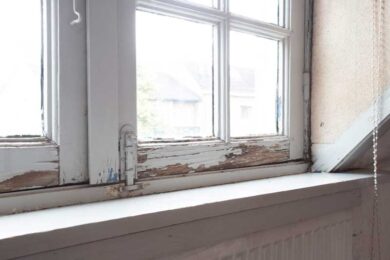Expert Lead Paint Removal Company-- Serving All NYC Boroughs
Expert Lead Paint Removal Company-- Serving All NYC Boroughs
Blog Article
Ideal Practices for Making Certain Safe and Thorough Lead Violation Reduction
Dealing with lead infraction abatement needs a multi-faceted approach to ensure both security and conformity. Preliminary analyses using innovative detection approaches such as XRF analyzers established the stage for an accurate understanding of contamination levels. Integrating proper control strategies, consisting of closed barriers and HEPA filtration, paired with using personal protective equipment (PPE) for employees, develops the backbone of a secure operation. Careful cleanup procedures, including HEPA vacuuming and wet-wiping, are vital. It's the last clearance process, including detailed examinations and research laboratory testing, that truly validates a lead-free atmosphere, ensuring long-term security. Exactly how do these practices interconnect to guarantee comprehensive lead abatement?

First Assessment
Conducting a first assessment is a crucial first step in lead offense abatement. This stage encompasses an in-depth examination of the building to determine the presence, level, and certain locations of lead-based threats. Qualified experts, such as qualified lead assessors or take the chance of assessors, should carry out an extensive website assessment, using devices like X-ray fluorescence (XRF) analyzers to precisely identify and determine lead focus in paint, dust, soil, and water.
The evaluation needs to additionally consist of an evaluation of the building's history, previous records, and any issues or health and wellness concerns reported by residents - Lead Removal Contractors. Documenting the searchings for meticulously is vital, as these documents create the basis for establishing an efficient abatement approach. An extensive analysis also entails tasting and laboratory analysis, which are important to verify the existence of lead and guide subsequent activities
Additionally, it is essential to interact the results transparently to all stakeholders, including property proprietors, tenants, and governing authorities. By making certain that the preliminary evaluation is performed with precision and rigor, experts can lay a solid foundation for a targeted and effective lead reduction process, ultimately guarding public health and ensuring conformity with regulatory criteria.
Correct Containment
Appropriate containment is vital to stop the spread of lead pollutants during reduction activities. Successfully handling control reduces the risk of lead dust and debris migrating to non-work locations, thereby safeguarding both the setting and individuals outside the prompt work area. To accomplish correct containment, a closed obstacle of plastic bed linen must be established around the workplace, ensuring all joints and edges are safely sealed. Lead Removal Contractors. This barrier must expand from flooring to ceiling and be taped down to stop any kind of leaks.

Routine inspections of the containment area are required to examine for violations or weaknesses in the barrier. Any type of identified concerns need to be quickly resolved to maintain the stability of the control. By adhering to these methods, reduction jobs can effectively manage lead contamination and minimize involved wellness threats.
Worker Protection
Ensuring employee defense is vital during lead reduction jobs to stop work-related exposure to dangerous lead particles. Essential procedures include using personal protective devices (PPE) such as respirators, handwear covers, and full-body matches specifically created to obstruct lead dirt and fumes. Employees should undergo extensive training on the proper usage and maintenance of PPE, consisting of in shape screening for respirators to ensure optimum effectiveness.
Design controls, such as local exhaust air flow systems, are important in reducing air-borne lead concentrations in the job atmosphere. Management controls should likewise be carried out, consisting of limiting the duration of exposure and revolving workers to minimize specific direct exposure times. Routine medical security and biological surveillance are essential for early detection of lead absorption, enabling prompt intervention and therapy.
In addition, establishing a decontamination method is important. Employees need to follow rigorous purification procedures prior to breaks and at the end of their change to stop lead dust from being carried outside the job location. This includes thorough hand and face washing with lead-specific cleaner and altering out of polluted clothing.
Careful Cleaning
Keeping a secure work setting expands past worker security and encompasses meticulous clean-up to guarantee lead fragments are completely removed from the website. The process of thorough cleanup is vital in stopping the recontamination of the mellowed out area and guarding both existing and future passengers.
To achieve a thorough cleanup, all workplace must be systematically decontaminated. This includes the use of specialized HEPA (High-Efficiency Particulate Air) vacuum and wet-wiping techniques to capture and get rid of fine lead dirt that might have cleared up on surfaces. It is necessary to clean up all horizontal surfaces, consisting of floors, window sills, and counter tops, along with upright surface areas that might have caught lead particles.
Employees must wear ideal individual protective devices (PPE) throughout cleaning to avoid exposure to residual lead dust. Made use of cleansing products such as wipes, sponges, and mop heads ought to be taken care of according to contaminated materials disposal laws.

Last Clearance
Last clearance is the vital wrapping up phase of lead abatement that determines whether the site is safe for reoccupation. This critical action entails thorough assessment and testing to verify that all lead hazards have actually been properly gotten rid of.

Last clearance screening not just protects future residents however additionally guarantees conformity with regional, state, and government guidelines. Furthermore, it offers as a documented recognition of the abatement service provider's adherence to market best methods. Making sure a complete and effective last clearance is important in guarding public health and cultivating trust in the abatement procedure.
Verdict
Guaranteeing secure and comprehensive lead Lead Paint Removal Company infraction reduction necessitates a diverse technique including initial assessments with advanced discovery approaches, efficient containment methods, rigorous worker security procedures, and thorough cleanup treatments. The last clearance phase, featuring detailed examinations and research laboratory screening, is important to confirm conformity with EPA requirements. Adherence to these finest practices assures a risk-free environment for occupants, minimizes health risks, and upholds regulatory demands, consequently advertising public health and wellness and safety in lead-affected locations.
Report this page